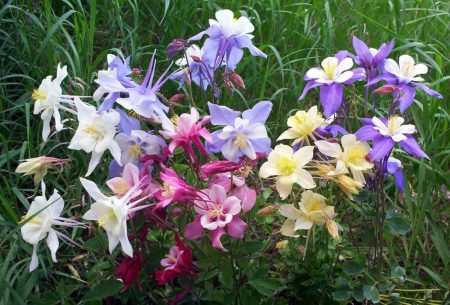
A large number of different varieties of aquilegia have now been bred. This perennial is grown in all climatic zones - from hot steppe to taiga. It is very decorative, but is prone to self-seeding and cross-pollination, so it loses the necessary qualities and beauty. The best way to get a suitable specimen for your garden is to grow aquilegia from seeds at home.
Important! Aquilegia seeds are poisonous! Precautions must be observed during handling and storage.
Methods for planting aquilegia
The catchment is very difficult to tolerate replanting and propagation through dividing the bush, because the root system has a main root that goes deep into the ground. It is easily damaged and the plant may die.
The following methods of planting aquilegia give good results:
- sowing seeds in the ground in spring or autumn,
- growing through seedlings.
Let's talk in detail about each of them.
Planting aquilegia seeds in the ground in spring
The best months for sowing seeds outdoors are March and April, so as soon as the soil can be worked, it is time to sow the catchment.
When growing aquilegia from seeds in the spring, their stratification is necessary. The fact is that the seeds have a shelf life of only one year. In spring, planting is done with last year's material, which risks low germination. To avoid this, they imitate the natural wintering conditions of seeds - moisture and cold.
To do this, the seeds are mixed with soil or sand, moderately moistened and placed in the refrigerator for three to four weeks at a temperature of +5 + 7 degrees. In such conditions, the embryos go to sleep, and the life processes in them are suspended. At this time, microcracks form on the outer hard shells of the seeds, under the influence of moisture and low temperature, and the shells soften.

The first shoots appeared.
After removing the seed and creating comfortable conditions for it, +18 degrees, the embryos awaken. They easily break the shells and produce strong sprouts.
This method of growing aquilegia from seeds at home, although it seems more troublesome, is good because over the summer and autumn the plant grows, gets stronger and blooms the next year.
All the secrets of flower growers ⇒ Proven growing method gaillardia from seeds
Sowing seeds in the ground in autumn
Planting aquilegia in open ground in the fall is done with fresh seeds, collected this year, therefore, the shoots turn out to be friendly. Good results are observed when sowing in September.
The selected area must be fenced with flexible borders or planks, scatter the seeds over the surface of the soil, lightly sprinkle with soil and cover with covering material. They will undergo stratification in the winter under natural conditions, and in the spring they will produce good seedlings.
It is important not to miss the moment when young plants have three or four true leaves. This is the right time for transplantation to a permanent place. Later, the aquilegia root will go deeper into the soil and it will be impossible to replant the plant without damaging the root.
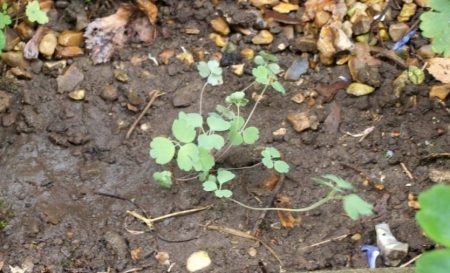
There will be no flowering in the first year after planting.
With this method of growing aquilegia from seeds, a lot of high-quality planting material is obtained, but there is no flowering, since this is the first year of a young plant’s life, and it begins to bloom in the second.
The aquilegia bush reaches its greatest maturity and decorativeness by three to four years.
Growing through seedlings
Aquilegia can be grown for seedlings both in open ground and in containers, and sowing can be done in both spring and autumn.
- sowing in open ground in the spring should be done with stratified seeds, then the plants with 3–4 true leaves should be transplanted to a permanent place.
- When sowing in autumn in open ground, stratification is not required. The seedlings will appear next spring and can be planted directly into the flower bed.
- To plant aquilegia in containers, you need to choose high containers, since even a small aquilegia has a long central root. For the same reason, it is important not to miss the time of the dive - the appearance of two true leaves. Each plant needs its own tall glass. Young aquilegias will take root better if, when transplanting to a permanent place, the cups are cut or torn without affecting the roots.
Growing aquilegia from seeds at home
1. Preparing the soil for growing seedlings
In nature, Aquilegia settles along the banks of rivers and streams, is found in forests and meadows, and some species colonize rocks. The soil prefers light, does not accumulate moisture, and is moderately nutritious. To grow aquilegia from seeds, ready-made soil for seedlings is suitable, but it is better to mix humus from leaves and turf in equal proportions yourself and add sand to the mixture.
The container needs to be high so that the long roots of the aquilegia have room to go deeper.It is filled with substrate, watered well and excess water is allowed to drain out.
2. Seed preparation
We remember that aquilegia seeds are active only for one year, then their viability rapidly weakens. To slow down this process and have good seed material, you need to do the following:
- sow fresh seeds immediately after collection,
- store collected seeds in a cool place,
- carry out stratification in the manner described above,
- treat the seed with solutions of biostimulants (Zircon, Epin extra, etc.)
3. Sowing seeds
In growing aquilegia, sowing seeds is an important and responsible moment. The lunar sowing calendar will help you choose the optimal day for this. Next is the work of a hardworking gardener.
So, the seeds are stratified, a deep container is selected, filled with light nutritious soil, and well watered. Now we level the soil surface and distribute the seeds evenly. They need to be pressed tightly to the ground with a spoon and sprinkled on top with a 3 mm thick layer of earth. It is better to moisten with a spray bottle.
4. Conditions for seed germination
The landing should not be too thick, because there is still a dive to be done. To create a microclimate and prevent drying out, the container must be covered with plastic wrap. Seeds germinate in light within 7 - 14 days. The required temperature is 16 - 18 degrees.
5. Caring for aquilegia seedlings
When shoots appear, the film must be removed. Now caring for seedlings consists of careful and moderate watering. The temperature remains the same, 16 – 18 degrees. It is quite cool, so if it gets too wet, there is a risk of blackleg.Frequent inspection of plants and timely response help to avoid many problems when growing aquilegia at this stage.
After the opening of two true leaves, it is time for the seedlings to dive. We take tall cups (preferably disposable ones), fill them with soil and place one plant in there.
Until planting in a permanent place, the seedlings will live on the windowsill or balcony. It is important to protect it from the direct rays of the active spring sun. To do this, you need to create shading in any convenient way.
Planting aquilegia in open ground
Landing dates
Each area has its own timing for planting aquilegia in open ground. Somewhere it is the end of March, somewhere April, and somewhere even May. It is only important that there are no night frosts, the weather is consistently warm, the air temperature is from +16 degrees and above.
Selecting a location
This perennial can live anywhere. Aquilegia bushes grown in partial shade are especially beautiful. Here she feels comfortable and in her place. In sunny places the plants are smaller and the flowering period is shorter.
Practice has proven that it is better to plant seedlings immediately in a permanent place. Selecting suitable conditions for a grown bush by replanting it most often leads to the death of the plant.
Soil requirements
It is believed that aquilegia is not demanding on the composition of the soil. However, when creating a new flowerbed, it is worth providing it with conditions close to natural ones - light, loose and moderately nutritious soil. To do this, the planting area is covered with a thick layer of humus and dug deep, onto the bayonet of a shovel.
Planting Density
Planting density depends on the variety:
- for short people, a distance of 25–30 cm from each other is sufficient,
- tall people need 40–45 cm.
Caring for aquilegia in the garden
Caring for aquilegia is no more difficult than caring for any other plant. Care consists of a standard set of manipulations: watering, fertilizing, loosening, weeding. But there are also several specific ones, only for the catchment area.
Watering
The long root of aquilegia obtains moisture from the deep layers of the soil, so in areas with a humid climate it receives enough rainfall. Where it’s hot, you can’t do without watering. After watering or rain, it is good to loosen. This way the soil will not harden, the required amount of moisture will be retained, and the roots of the plant will receive oxygen.
Feeding
Aquilegia needs two feedings per season. Mineral fertilizers can be used Sudarushka, Kristalon, Fertika and any others for flowering plants. The catchment will thank you with luxurious flowering.
Loosening, weeding
Loosening after each watering or rain will help maintain the desired soil structure and moisture, and also get rid of weeds.
Specific measures for caring for aquilegia
- In the spring, it is necessary to remove last year's dry leaves from the bush. This must be done very carefully so as not to damage the young shoots. But if you completely cut off the leaves in the fall, then in the spring the young shoots will grow without interference, and the gardener will have less work.
- Aquilegia is capable of rising from the ground, and the older the bush, the higher. This exposes the root. Every spring you need to add fertile soil under the bush, covering the roots. It is better to remove old bushes (more than 5-6 years old) and plant new young ones.
- There is another reason for this event - mature bushes from the center begin to wither away and fall apart to the sides. New but weak plants are formed along the periphery. The bush loses its decorative effect, so it is worth updating the plantings on time.
- Tall aquilegias need support. Without waiting for flowering, you need to prepare everything for gartering the plant.
- Faded stems must be cut back to the rosette of leaves. This way the bush will remain decorative, will not waste energy on growing seeds, and will also eliminate the possibility of self-seeding.
- Aquilegia grown by self-seeding most often has “outbred” qualities and is capable of transmitting them to other plants through cross-pollination. Therefore, it is better to plant especially beautiful varieties away from the rest.
- If you plan to collect seeds, then you need to close the resulting boxes with gauze bags. The same isolation can ensure the purity of valuable specimens.
- In autumn, the flower stalks are cut off and the exposed roots are covered with a mixture of compost and manure. This provides strengthening of the plant, protection from freezing and feeding.
Work calendar
February
- Seed stratification.
March
- Sowing seeds in open ground in areas with a warm climate or in containers at home.
April
- Sowing seeds in open ground in areas with a cold climate.
- Picking seedlings from containers into cups.
- Cleaning the bush from last year's leaves.
- Adding soil to the roots.
- Fertilizing with mineral or organic fertilizer.
- Preparing supports for gartering flower stalks.
May
- Planting autumn seedlings in a permanent place.
- Planting spring seedlings from cups into open ground.
- Peduncle garter.
June July
- Trimming faded flower stalks.
- Selection and isolation of capsules for ripening and collecting seeds.
- Fertilizing with mineral and organic fertilizers.
August
- Collection of ripened seeds.
September October
- Autumn sowing of seeds in open ground.
- Filling the exposed roots with a mixture of manure and humus.
Aquilegia propagation
Self-seeding
Aquilegia reproduces very well by self-sowing, and if the quality of the bush is satisfactory, then you can carefully transplant the young plants to a new location. But most often, simple blue flowers grow after self-sowing.
To get a variety of colors and shapes, it is better to grow aquilegia from seeds.
Seeds
- Autumn sowing of seeds in open ground is carried out in September - October, depending on the climate.
- Spring sowing of seedlings in containers - in March, in open ground - in March or April. Seedlings of both autumn and spring sowing are planted in a permanent place in May.
Dividing the bush
This method is used extremely rarely due to the fact that aquilegia is difficult to tolerate such intervention. Typically, particularly rare specimens are subjected to division. The procedure is carried out in early spring or in August - September. If everything goes well, the plants will have time to take root.
By cuttings
This is how varietal aquilegias are propagated. In early spring, a young shoot is carefully broken off from the mother bush, treated with preparations for root formation and placed in sand or a greenhouse for rooting. Care consists of protection from direct sunlight and careful watering. At the end of summer, rooted plants are planted in a permanent place.
Using aquilegia in garden design
There are so many varieties of aquilegia that it can be considered ubiquitous.
Low-growing specimens are used as borders and elements of alpine slides. Here it goes well with saxifrage, gentian and grains.
Tall varieties look good in mixborders with bells, astilbe, lupins.
It's impossible to imagine design of the reservoir without aquilegia. Here she flaunts among ferns, irises and hostas.
Glades with ornamental grasses acquire color and special charm thanks to its presence.
In addition, aquilegia flowers retain their shape and color even when dry and are widely used in compositions with other dried flowers.
Diseases and pests
Unfortunately, aquilegia is susceptible to diseases and is loved by pests.
Powdery mildew
Powdery mildew is the most common. It can be found in the form of a white coating on leaves and peduncles. Constant inspection of plants will help to detect the disease at an early stage and defeat it with the help of drugs containing sulfur: Hom, Fundazol, Topaz. A good result is obtained by using a solution of colloidal sulfur. Treatments should be repeated every 7 to 10 days. Two to three sprays will help rid the plant of the disease.
Gray rot
Gray spots of mold on stems and leaves - this is how this disease manifests itself. It spreads with lightning speed, especially when it is cool and damp, and moves from one plant to another.
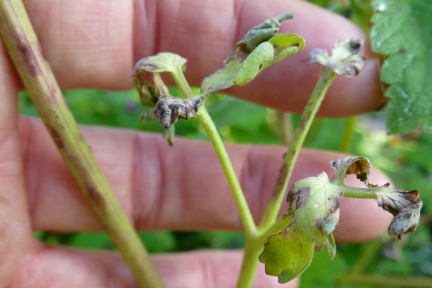
Gray rot.
Fighting gray rot is difficult. To do this, spray with Bordeaux mixture and fungicide solutions (Agat-25K, AbigaPik, Vitaros, etc.). If the situation gets out of control, it is better to remove all affected plants and burn them.
Rust mushrooms
Another serious disease that spreads quickly and is difficult to treat. The affected aquilegia looks like this: bright red spots on the lower surface of the leaves. Later, the spots will become dry and the leaves will curl and die. The drugs Topaz, AbigaPik, etc. are used for treatment. Fungal spores are quickly carried by the wind and affect other plants in the garden, so you should not waste time, but rather dig up and burn the diseased bush.
Pests that attack aquilegia, sucking, feed on its juice.
spider mite
Located on the lower surface of the leaves, it creates a protective web, inside which a whole colony of microscopic insects quickly grows.
First, tiny yellow dots appear on the leaves, then the entire leaf becomes enveloped in cobwebs and dries out.
Urgent spraying with Kleschevit or Fitoverm is indicated, and if these drugs turn out to be ineffective, then stronger ones should be used - Bi-58, Actellik. Moreover, it is necessary to treat not only aquilegia bushes, but also nearby plants. Repeat the treatment 3 – 4 times with an interval of one week.
Aphid
Aphids appear most often in the heat. First of all, it attacks young shoots, sucks out the juice, twists and destroys them. If you do not react in time, the aphid will infect the entire plant.
In this case, Biotlin, Doctor, Tanrek, etc. will help. Treatments are also carried out 3-4 times with an interval of 7 days.
Nematodes
Nematodes are tiny worms that settle in the roots of aquilegia, from there they penetrate the stem and suck out useful substances. In this case, the plant slows down in growth, becomes deformed, and the leaves lose color.
It is impossible to reach the nematode with any chemicals. Therefore, the affected plant is burned and preventive control measures are taken:
- observe crop rotation,
- marigolds and calendula are grown and embedded in the soil when digging,
- breed earthworms (they are enemies of nematodes),
- green manure is pre-sown on the site of the future flower bed,
- treat the seed with a weak solution of potassium permanganate.
How to collect seeds
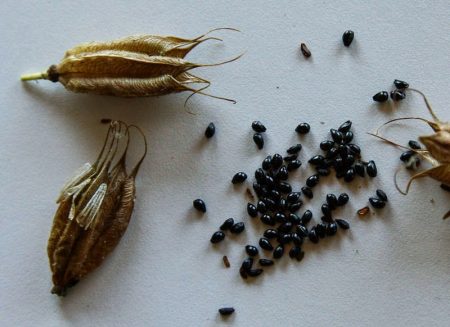
Aquilegia seeds.
In August, when the flowering of the aquilegia bush comes to an end, there is no need to rush to cut off all the flower stalks. Some of them have formed fruits, inside of which seeds are ripening.Dry seed pods open very easily from any pressure, so you need to prepare several bags of gauze or other light fabric. They are put on the fruit, and the seeds remain inside the trap.
You can cut slightly under-dry fruits, dry them indoors, and thus provide yourself with fresh seed material.
Here is such a fascinating and varied process of growing aquilegia from seeds at home. Anyone who travels this entire path, or at least some part of it, will receive great satisfaction and joy in seeing beautiful aquilegia every day for many years.
Continuation of the topic:
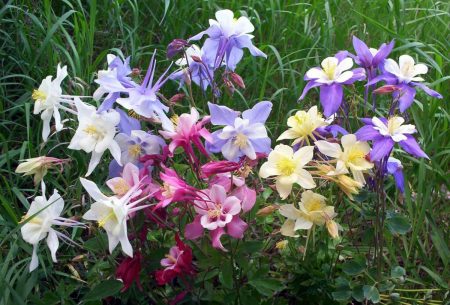
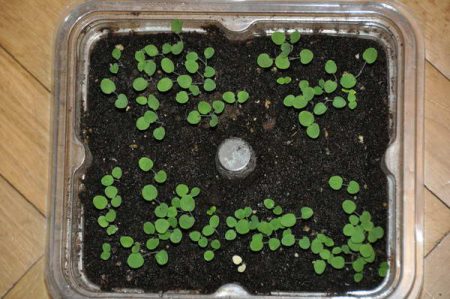
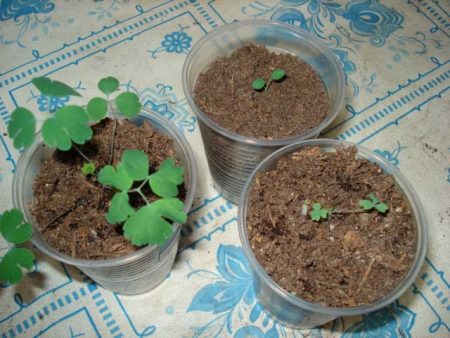
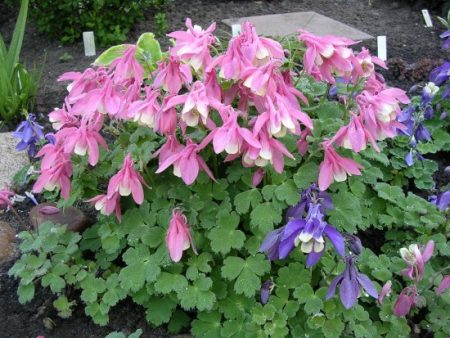
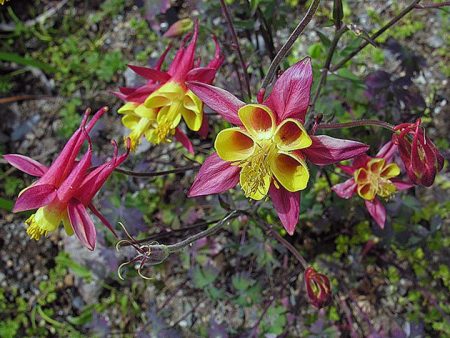

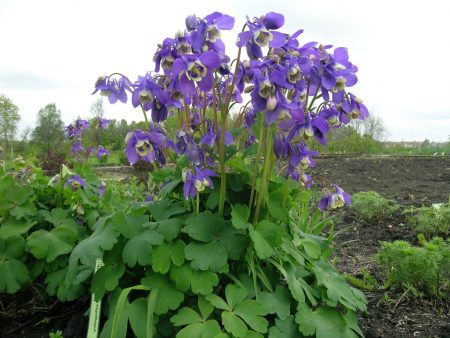
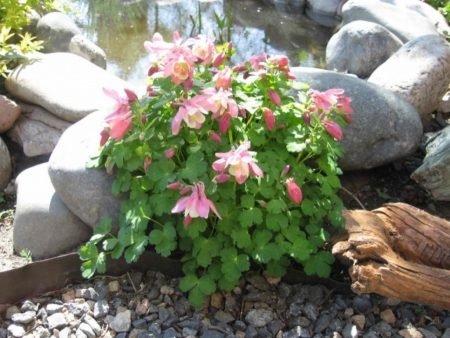

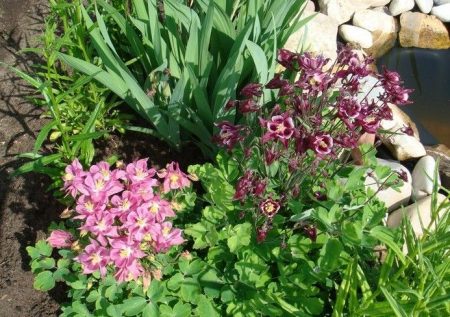
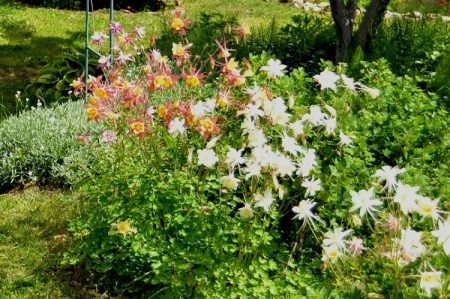
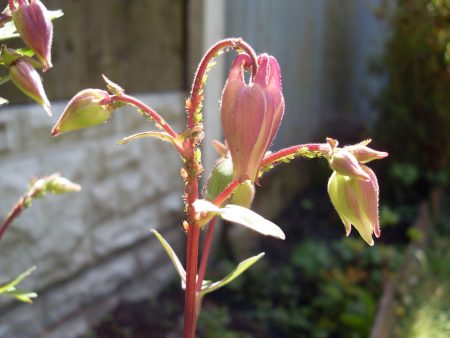

 (5 ratings, average: 4,60 out of 5)
(5 ratings, average: 4,60 out of 5) CUCUMBERS NEVER GET SICK, I'VE BEEN USING ONLY THIS FOR 40 YEARS! I SHARE A SECRET WITH YOU, CUCUMBERS ARE LIKE THE PICTURE!
CUCUMBERS NEVER GET SICK, I'VE BEEN USING ONLY THIS FOR 40 YEARS! I SHARE A SECRET WITH YOU, CUCUMBERS ARE LIKE THE PICTURE! You can dig a bucket of potatoes from each bush. Do you think these are fairy tales? Watch the video
You can dig a bucket of potatoes from each bush. Do you think these are fairy tales? Watch the video
 How our fellow gardeners work in Korea. There is a lot to learn and just fun to watch.
How our fellow gardeners work in Korea. There is a lot to learn and just fun to watch. Eye trainer. The author claims that with daily viewing, vision is restored.They don't charge money for views.
Eye trainer. The author claims that with daily viewing, vision is restored.They don't charge money for views. A 3-ingredient cake recipe in 30 minutes is better than Napoleon. Simple and very tasty.
A 3-ingredient cake recipe in 30 minutes is better than Napoleon. Simple and very tasty. Therapeutic exercises for cervical osteochondrosis. A complete set of exercises.
Therapeutic exercises for cervical osteochondrosis. A complete set of exercises. Which indoor plants match your zodiac sign?
Which indoor plants match your zodiac sign? What about them? Excursion to German dachas.
What about them? Excursion to German dachas.
I stupidly copied the data. How is it that the shelf life of aquilegia seeds is only 1 year. And the manufacturer says until December 31, 2012 (bought yesterday). Why…is this pacifier for…. money. Did you dig in the ground yourself?
Congratulations on your purchase. When these seeds sprout, then you will boast. You can also read about the expiration dates of seeds here: